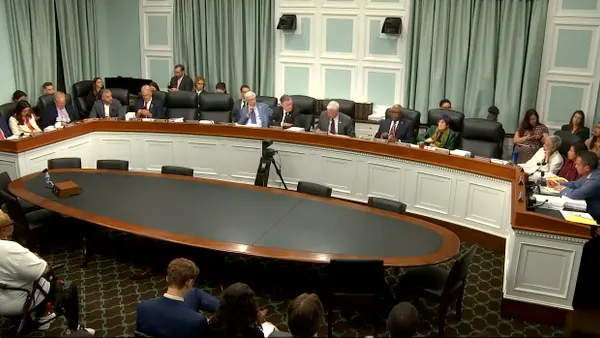Dive Brief:
- The EPA proposed new restrictions Thursday that would require the replacement of virtually all lead water pipes across the U.S., according to a White House press release. The goal is to remove the neurotoxin from drinking water and prevent another public health catastrophe like the one that occurred in Flint, Michigan.
- Under the proposal, utilities must replace lead pipes entirely over the next decade at a pace of 10% each year, and must create inventories of all their lead pipes. The agency will accept public comments on the proposal for 60 days and will finalize the rule sometime next year.
- The plan would affect about 9 million pipes across the country, and could cost $20 billion to $30 billion, according to The New York Times. It represents the strictest-ever limit on lead in drinking water, but wouldn’t ban it entirely: rather, it would lower the allowable amount to 10 parts per billion from the current 15 parts per billion.
Dive Insight:
The heads of Dallas-based contractors AECOM and Jacobs, Montreal-headquartered WSP and other major construction firms have identified water projects as a growing market. Beyond pipe replacement, resilience, flooding, stormwater and other climate change-related water work is booming, buoyed by the IIJA and other federal spending.
The Infrastructure Investment and Jobs Act designates $15 billion to help utilities pay for the upgrades along with $11.7 billion in general-purpose funding through the Drinking Water State Revolving Fund that can be used for lead pipe replacement, according to the release. Funding from the American Rescue Plan’s $350 billion State and Local Fiscal Recovery Fund can also be used to replace lead service lines and remediate lead paint.
The EPA’s lead pipe proposal advances the Lead Pipe and Paint Action Plan, the Biden administration’s multi-agency push to reduce all sources of lead exposure.
There is no safe level of exposure to lead, particularly for children, according to the World Health Organization. It can cause irreversible brain and nervous system damage, learning and behavior problems, slow growth and development issues.
The new proposed Lead and Copper Rule Improvements also increase tap water sampling requirements, mandate water systems to complete comprehensive and publicly available lead service line inventories and strengthen requirements for water systems to take additional actions to reduce lead health risks, per the White House press release.














